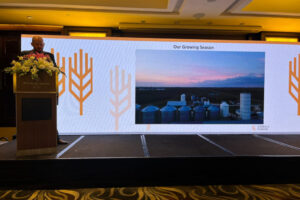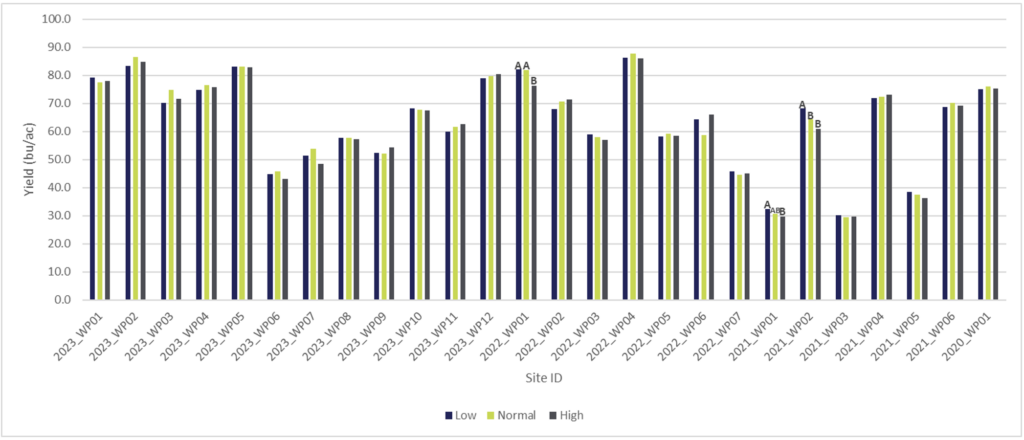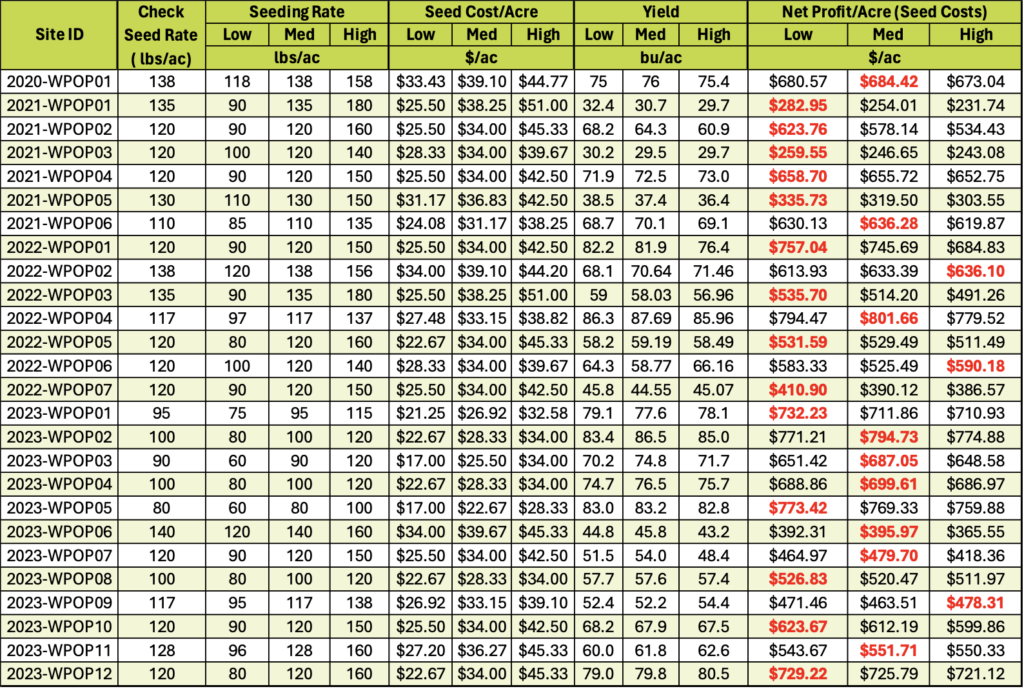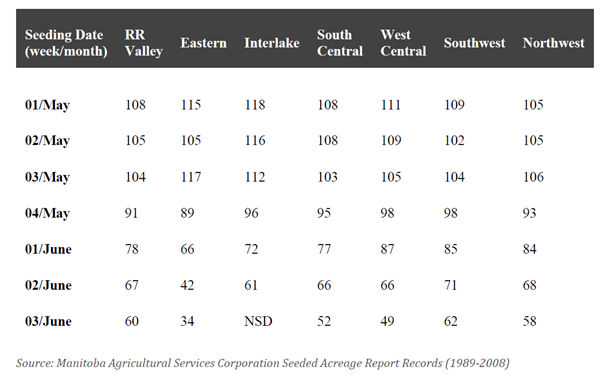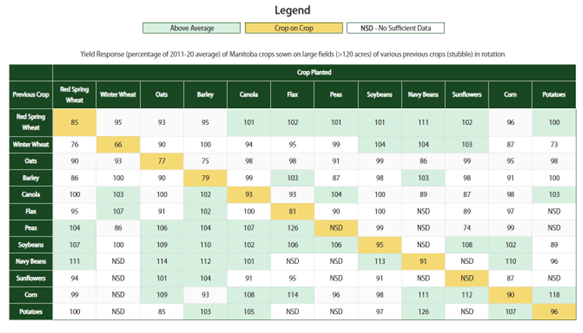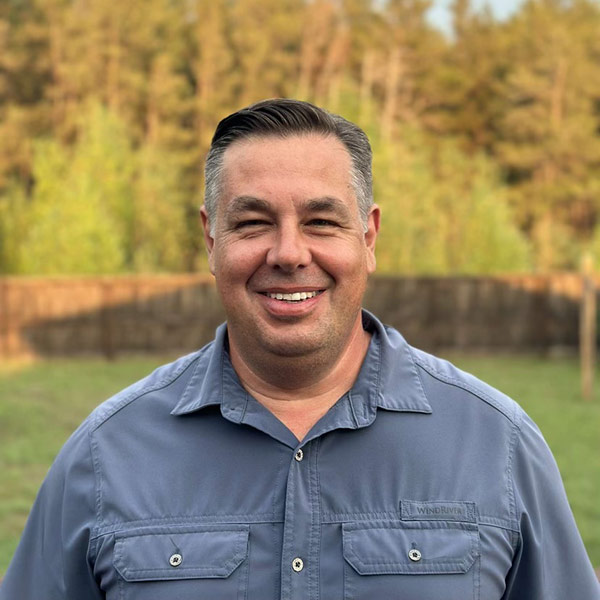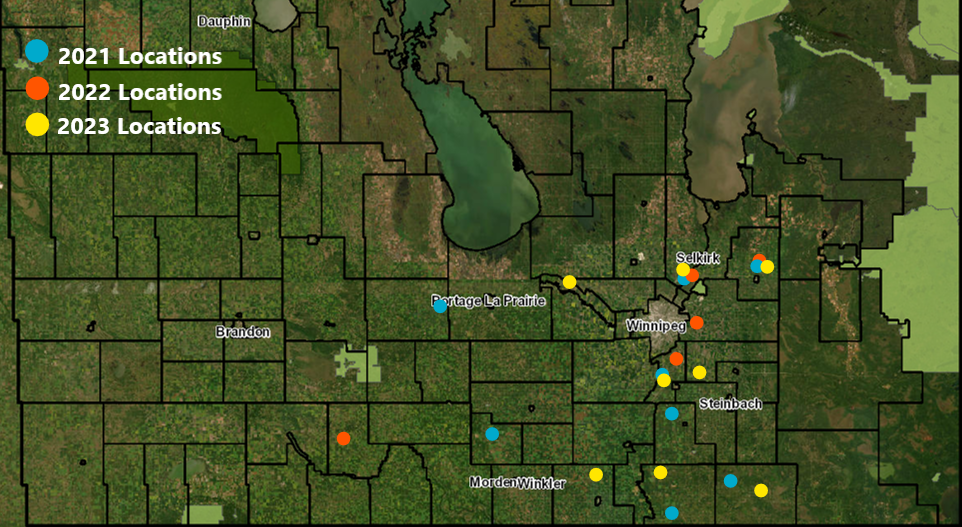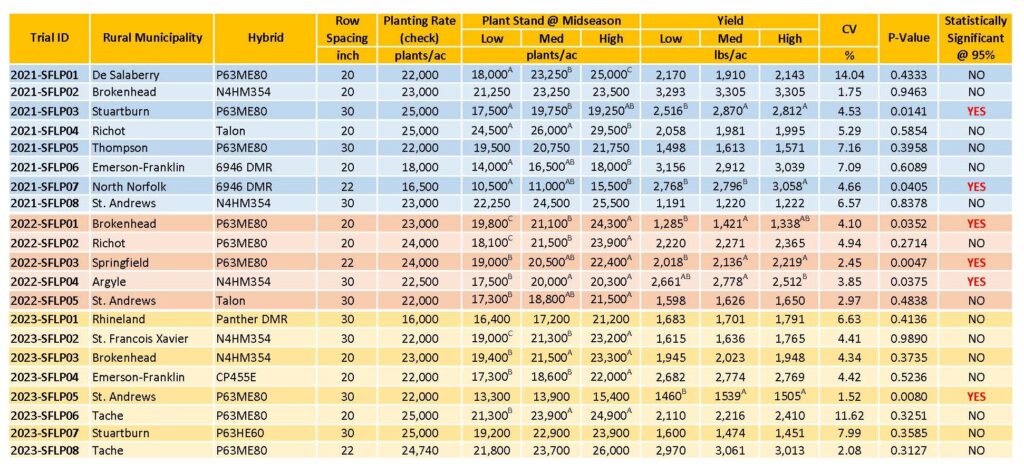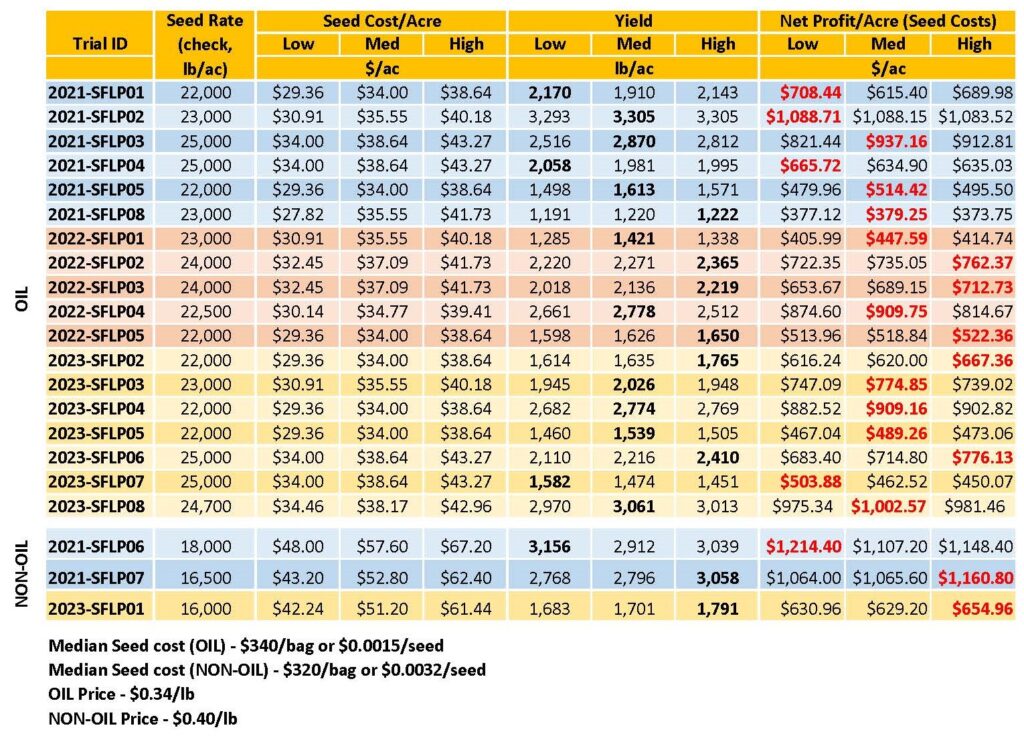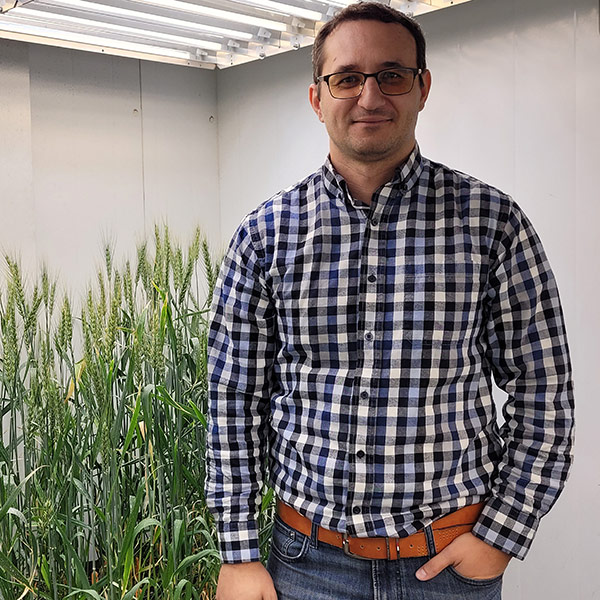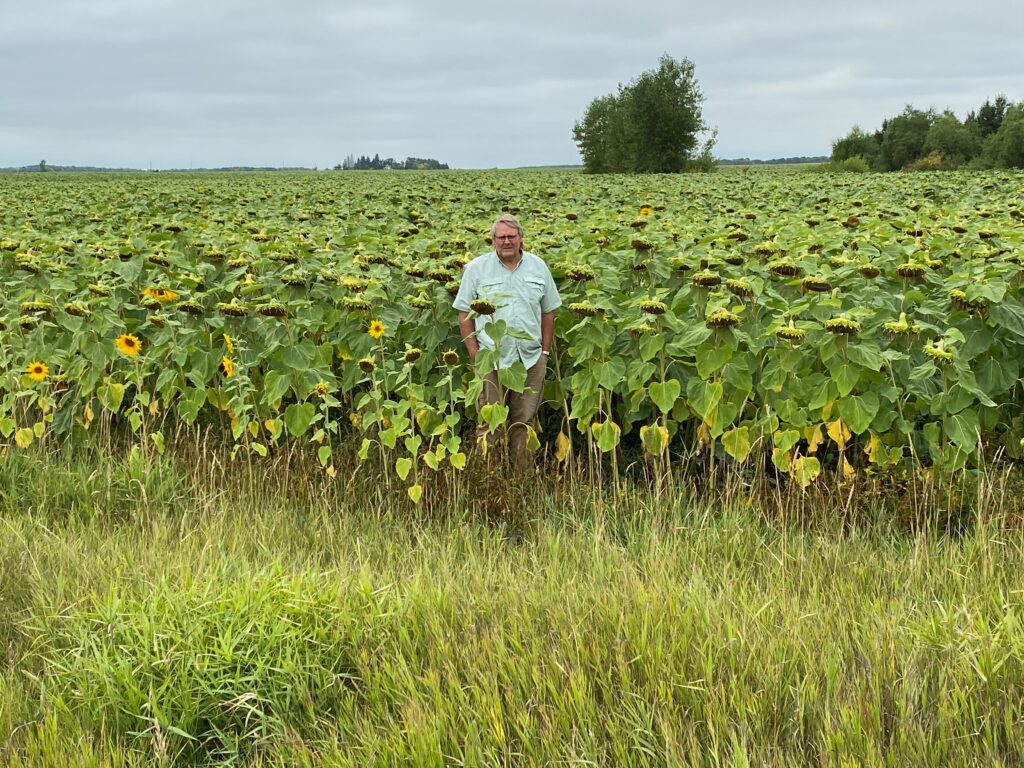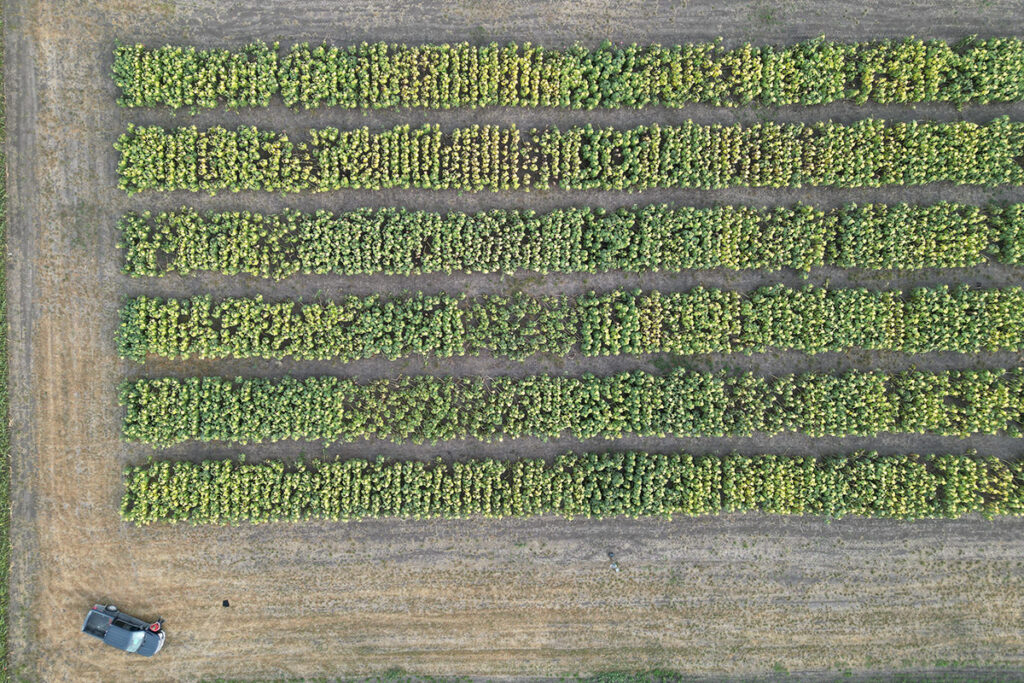In the field and abroad: sharing the Canadian wheat story with global customers
In November 2023, Cereals Canada released the 2023 New Wheat Crop Report and shortly after led four trade and technical missions to 17 countries to showcase the quality of Canadian wheat to customers and buyers.
The annual trade and technical missions visit key global markets for Canadian wheat to share reports on the quality and functionality of the year’s wheat crop and include information on market supply and demand. Experts from the value chain – such as commissioners from the Canadian Grain Commission, exporters and farmers – participate in these missions.
As part of the seminars during these missions, farmer participants were asked to present on key farming practices and highlight the practices they follow to grow wheat while minimizing environmental impacts.
“Each market wants to understand more about Canadian farming practices,” says Dean Dias, CEO at Cereals Canada. “Having farmer representatives speak on behalf of Canadian growers about their farming practices is critical to informing customers about sustainability.”
Grain farmer and MCA crop committee delegate Korey Peters was a farmer representative on the Asia trade and technical mission, visiting customers in Japan, Indonesia, the Philippines and China from Nov. 24 to Dec. 9.
“The experience was awesome and very eye opening,” says Peters. In each seminar, Peters used photos and videos to talk about the crop types he grows on his family farm and shared information about how the 2023 growing season went.
Photo Gallery
- Korey Peters and the rest of the Canadian delegation at Japan Flour Millers Association meeting in Tokyo, Japan.
- After Korey’s presentations he was often asked questions related to soil fertility, managing wheat diseases and how he looks after the environment.
- (Left to right) Dean Dias, Norbert Cabral, Matt Bingham, Korey Peters and Lindsay Bourre at the Great Wall of China.
After his presentations, he was often asked questions related to soil fertility, managing wheat diseases and how he looks after the environment.
“Customers were very curious to hear firsthand what we do, how we grow things, and what works and what doesn’t,” he says. “I talked a lot about crop rotation and science-based solutions, and how we work with professionals like certified agronomists, for example, to help us.”
At all the seminars, Peters says customers were engaged and seemed eager to speak directly with a farmer. “They wanted to know about everything I did, but they also wanted to know about the grain and quality,” he says. “They were asking about breadcrumb structure, air pockets and how the bread was going to look.”
He adds the level of scientific detail blew his mind. “I just grow wheat, but it was interesting to hear these types of questions and discussions. It also reinforced to me the importance of having members from the whole value chain at these missions to answer all their questions and to build trust.”
Something that stood out to Peters was the relationships. “These companies want to put a face to the names of the people in the value chain. Some were on a first-name basis, or even exchanging hugs because they’ve met many times before. This showed me how important it is to our customers to have that personal connection.”
For Cereals Canada, the trade and technical missions are a way to build and maintain strong relationships, which is vital to growing the international demand for Canadian wheat. For Peters, it was a great experience, and he says he would go again in a heartbeat.
“It became very clear to me that Canada’s wheat is second to none. Every place we visited agreed that Canadian wheat is phenomenal, which makes me very proud of what we grow.”
For more information about the New Wheat Crop Report or the trade and technical missions, visit cerealscanada.ca.



